Containers With Serious Contrast Always Stand Out
Balance the light and dark elements in a design to create more visual impact
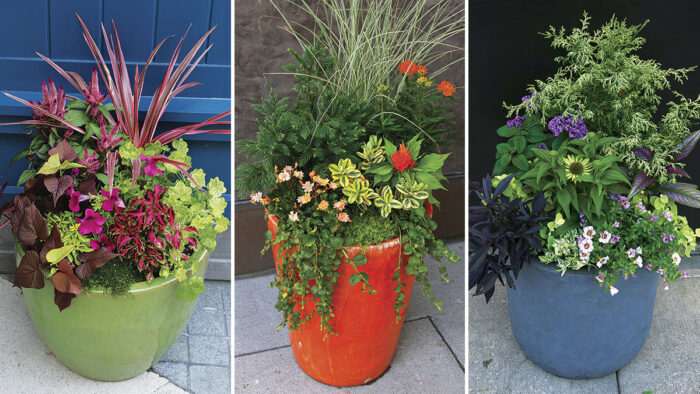
How often do you return home from an expensive assault on the local nursery to find that, ultimately, your container design is disappointing for reasons you cannot quite explain? Creating a pleasing arrangement of plants in a container can be a challenge. You set out to create a thing of blended beauty and find that you have merely a collection of plants. In two decades of helping clients put together container combinations, I’ve finally distilled all of my advice for creating visual interest into this simple mantra: more contrast!
Contrast is the arrangement of opposite elements in design to create visual interest, excitement, and drama. Harnessing the power of contrast is as simple as making sure each plant has different characteristics from its neighbors, so that each plant complements the others while remaining distinct. When plant partners are too similar, the uniqueness of each plant is lost, and so is the drama.
It’s easy to see how fine foliage next to bold creates excitement, or how contrasting forms stand out. But often the most effective contrast comes from playing light against dark. Think about an assemblage of plants in a gray scale and ask yourself, “Does the chosen assortment cover the whole spectrum, from the lightest of lights to the darkest of darks?”
It’s amazing how a whole combination will suddenly “pop” with the addition of one plant that expands the tonal range. A lighter, brighter version of a single plant can be the final adjustment that elevates a collection of plants to something that takes your breath away.
Expand your definition of a “bright” plant
Even though most people wouldn’t consider honey bush or ornamental oregano as particularly “bright” plants, in this combo they definitely glow against the dark coleus and heuchera. Contrasting form is also essential here, seen in the juxtaposition of the serrated edges of some of the foliage with the smoothness of others, and in the relationship between the vertical plants and the horizontal, mounded ones.
The coleus, though, is the one plant that brings everything together; it provides color echoes, separation between colors, and a bold leaf to contrast with just about everything around it. But without the oregano, this container would be flat, missing the lightest of lights that take this color palette from somber to joyous.
- Honey bush (Melianthus major, Zones 7–10)
- ‘Shenandoah’ switchgrass (Panicum virgatum ‘Shenandoah’, Zones 5–9)
- Sombrero® Adobe Orange coneflower (Echinacea purpurea ‘Balsomador’, Zones 4–9)
- Campfire® coleus (Plectranthus scutellariodies ‘UF12-22-1’, Zone 11)
- ‘Obsidian’ heuchera (Heuchera ‘Obsidian’, Zones 4–9)
- ‘Acapulco Orange’ ornamental pepper (Capsicum annuum ‘Acapulco Orange’, annual)
- ‘Kent Beauty’ ornamental oregano (Origanum ‘Kent Beauty’, Zones 6–9)
Standout forms still need balance

Several plants were in contention for the upright element in this pot. A dark green false cypress was the frontrunner to echo the deep green of the Irish moss, until this cordyline won out because its fountainlike form feels like an explosion and gives a lift to a group of mostly mounding forms. Once again, the darkest dark (the potato vine) is partnered with the lightest light (alternanthera), bringing the eye back to the foreground. Without that bright contrast, the pink petunia flowers and the bronze potato vine would lose their impact and blur together.
- ‘Cherry Sensation’ cordyline (Cordyline australis ‘Cherry Sensation’, Zones 9–11)
- ‘Ruby Parfait’ celosia (Celosia spicata ‘Ruby Parfait’, annual)
- ‘Crocodile’ geranium (Pelargonium peltatum ‘Crocodile’, Zones 9–11)
- ‘Pink Chaos’ coleus (Plectranthus scutellariodies ‘Pink Chaos’, Zone 11)
- Petunia (Petunia cv., annual)
- ‘True Yellow’ alternanthera (Alternanthera ficoidea ‘True Yellow’, Zones 9–11)
- ‘Sweet Caroline Sweetheart Red’ sweet potato vine (Ipomoea batatas ‘Sweet Caroline Sweetheart Red’, annual)
- Irish moss (Sagina subulata, Zones 4–8)
A limited color palette needs more tonal range
In this case, using shades of one dominant color (purple) and various greens makes designing a little less overwhelming by limiting plant choice. But this tactic alone won’t ensure that you’ll get enough contrast. It’s important to use a full tonal range of your chosen colors, from the darkest purples, to medium lavender and light lilac, and plenty of light-reflecting green variegated foliage.
Placing the lightest foliage (the winter creeper) next to the darkest (the sweet potato vine) also draws the eye down from the tall focal point (the cypress) and into the heart of the design. Had I used Irish moss, for example, in place of the winter creeper, the medium green tone would have been lost in the mix, even though its form and texture are contrasting.
- ‘Mariesii’ cypress (Chamaecyparis obtusa ‘Mariesii’, Zones 5–8)
- ‘Green Jewel’ coneflower (Echinacea purpurea ‘Green Jewel’, Zones 3–8)
- ‘Fragrant Delight’ heliotrope (Heliotropium arborescens ‘Fragrant Delight’, Zones 10–11)
- Persian shield (Strobilanthes dyerianus, Zones 10–11)
- ‘Superbells Evening Star’ million bells (Calibrachoa ‘Superbells Evening Star’, annual)
- ‘Lemon Licorice’ licorice plant (Helichrysum petiolare ‘Lemon Licorice’, annual)
- ‘Harlequin’ winter creeper (Euonymus fortunei* ‘Harlequin’, Zones 5–8)
- ‘Blackie’ sweet potato vine (Ipomoea batatas ‘Blackie’, annual)
Black and yellow are a no-fail pairing
This combination could be the poster child for tonal contrast. Its strictly limited palette of gold would not work without using every part of the tonal spectrum—from butter yellows (coreopsis, celosia), to lime-yellow midtones (mock orange, creeping Jenny), to the richer sunflower gold of the gloriosa daisy. For the most part, the green foliage takes a back seat. Tying it all together is the superb variegated sedum, which sets off the black mondo grass and the gloriosa daisy center cones to perfection. Replacing a less contrasting plant with this sedum brought the whole combo together.
- ‘Sundance’ mock orange (Choisya ternata ‘Sundance’, Zones 7–10)
- ‘Moonbeam’ coreopsis (Coreopsis verticillata ‘Moonbeam’, Zones 5–9)
- ‘Becky Yellow’ gloriosa daisy (Rudbeckia hirta ‘Becky Yellow’, Zones 5–9)
- Sedum (Sedum cv., Zones 3–9)
- Black mondo grass (Ophiopogon planiscapus ‘Nigrescens’, Zones 6–9)
- ‘Ice Cream Light Yellow’ celosia (Celosia plumosa ‘Ice Cream Light Yellow’, annual)
- Golden creeping Jenny (Lysimachia nummularia* ‘Aurea’, Zones 3–9)
- Australian astroturf (Scleranthus biflorus, Zones 9–11)
Fine texture can provide lightness
This container shows the value of playing up the lighter tones. In color, the orange of the glazed pot and of the flowers dominates, but a peek at the tonal values in black and white reveals how the fine-textured variegated hebe and the miscanthus provide a burst of light-colored airiness that enlivens the whole composition.
- ‘Morning Light’ miscanthus (Miscanthus sinensis* ‘Morning Light’, Zones 5–9)
- ‘Black Dragon’ Japanese cedar (Cryptomeria japonica ‘Black Dragon’, Zones 5–9)
- Butterfly weed (Asclepias tuberosa, Zones 3–9)
- Variegated hebe (Hebe × franciscana ‘Variegata’, Zones 9–11)
- ‘Ice Cream Orange’ celosia (Celosia plumosa ‘Ice Cream Orange’, annual)
- ‘Elise’ lewisia (Lewisia cotyledon ‘Elise’, Zones 3–8)
- Golden creeping Jenny (Lysimachia nummularia* ‘Aurea’, Zones 3–9)
- Scotch moss (Sagina subulata ‘Aurea’, Zones 4–8)
Lime plus charcoal equals instant contrast
The electric green of an outstanding begonia enlivens this combination for partial shade. The begonia’s bold, waxy leaves draw the eye and lend solidity that offsets the abundance of finer texture. The bright foliage also provides a counterpoint for the dark foliage of the black mondo grass and the fuchsia.
- White-tipped Japanese cedar (Cryptomeria japonica ‘Knaptonensis’, Zones 6–8)
- ‘Gartenmeister Bonstedt’ fuchsia (Fuchsia ‘Gartenmeister Bonstedt’, Zones 9–10)
- ‘Canary Wings’ begonia (Begonia ‘Canary Wings’, annual)
- Black mondo grass (Ophiopogon planiscapus ‘Nigrescens’, Zones 6–9)
- Forever® Red heuchera (Heuchera ‘TNHEUFR’, Zones 4–9)
- Himalayan maidenhair fern (Adiantum venustum, Zones 5–8)
- Golden spikemoss (Selaginella kraussiana ‘Aurea’, Zones 7–9)
- New Guinea impatiens (Impatiens hawkeri cv., annual)
*These plants are considered invasive in some areas. Please check invasiveplantatlas.org or your state’s list of invasive plants for more information.
Barbara Libner is the head container designer and chief merchandiser at Ravenna Gardens in Seattle.
Photos: Danielle Sherry. Illustrations: Conor Kovatch.
Fine Gardening Recommended Products

The Crevice Garden: How to make the perfect home for plants from rocky places
Fine Gardening receives a commission for items purchased through links on this site, including Amazon Associates and other affiliate advertising programs.
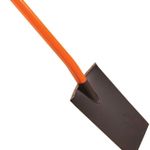
King Of Spades Nursery Spade
Fine Gardening receives a commission for items purchased through links on this site, including Amazon Associates and other affiliate advertising programs.

Razor-Back Potato/Refuse Hook
Fine Gardening receives a commission for items purchased through links on this site, including Amazon Associates and other affiliate advertising programs.



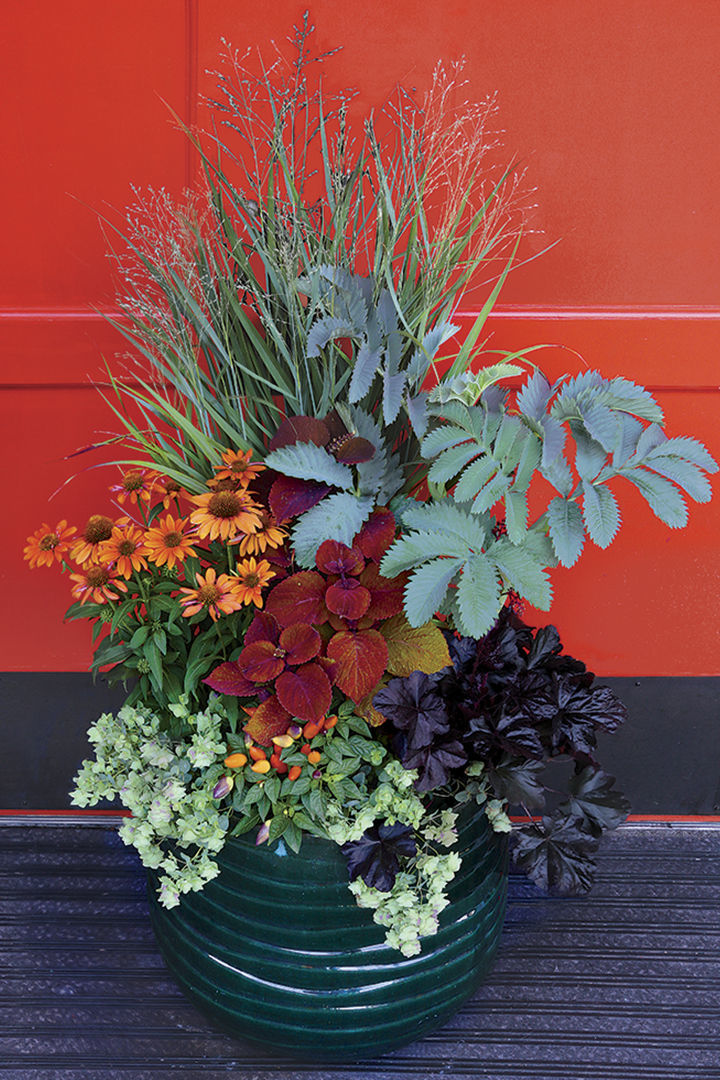
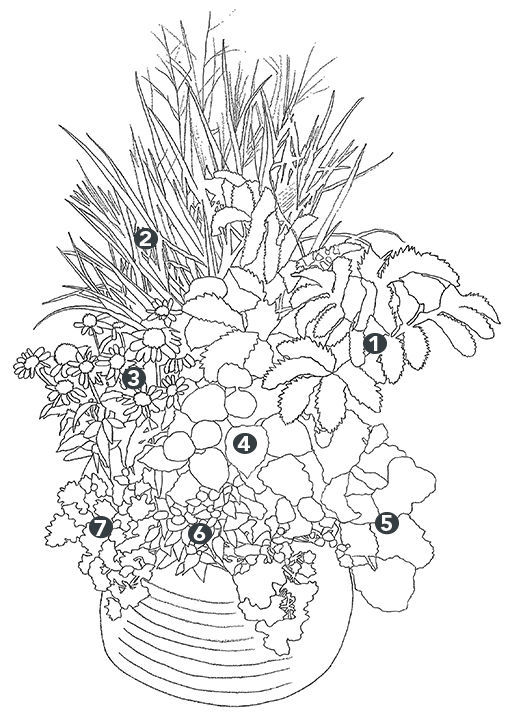
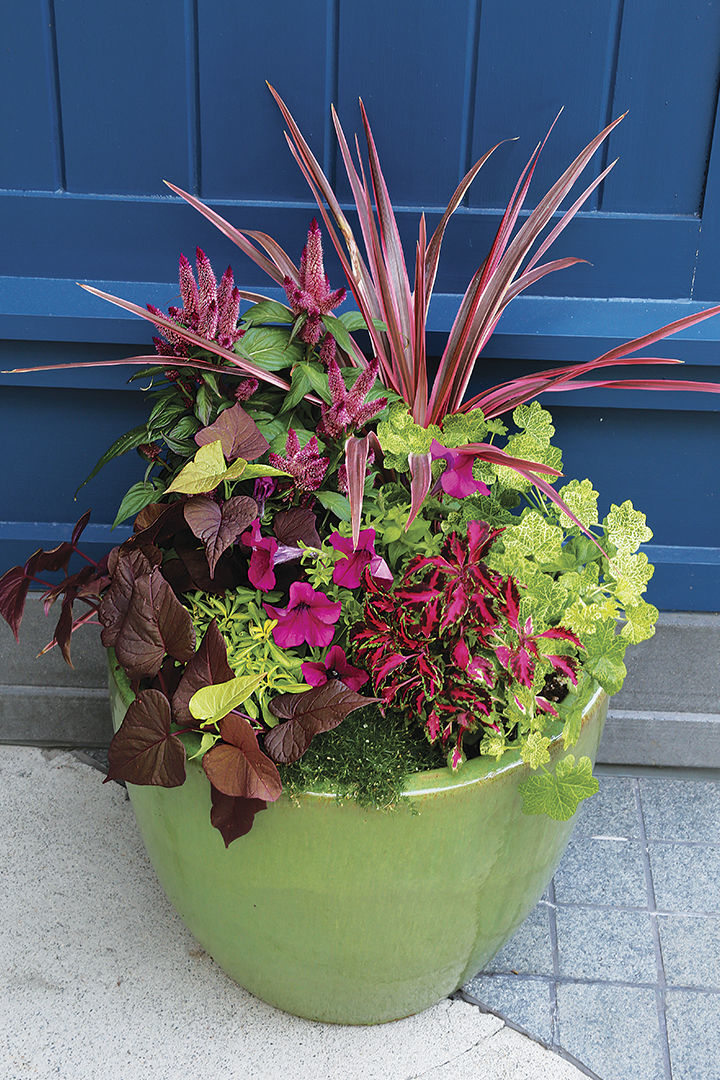
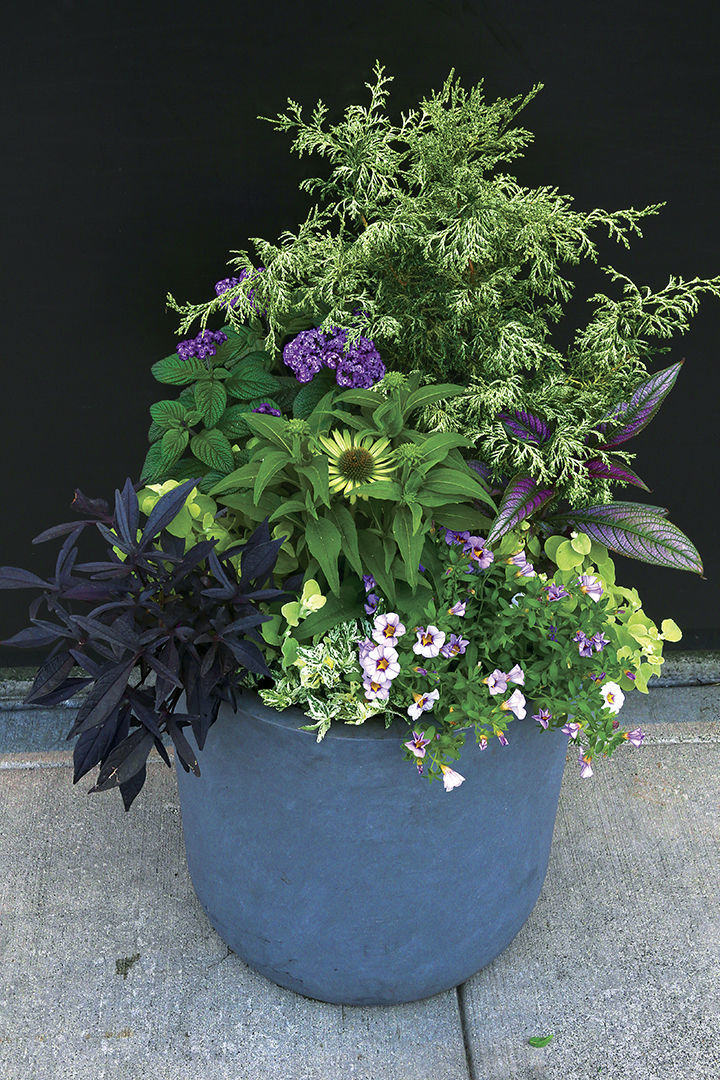
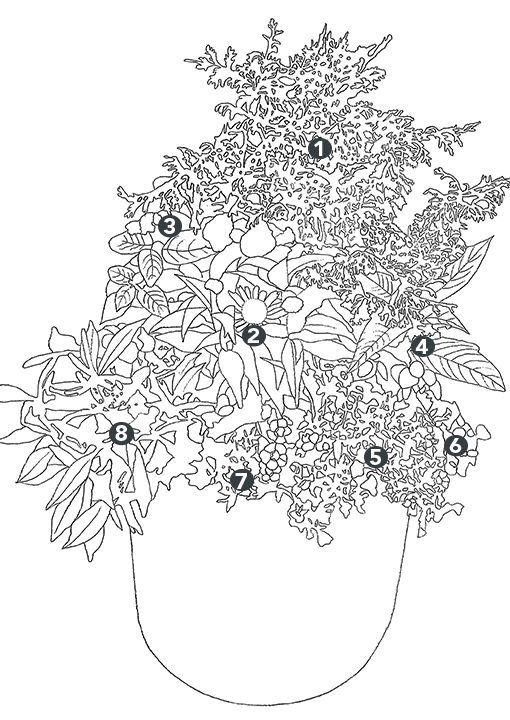

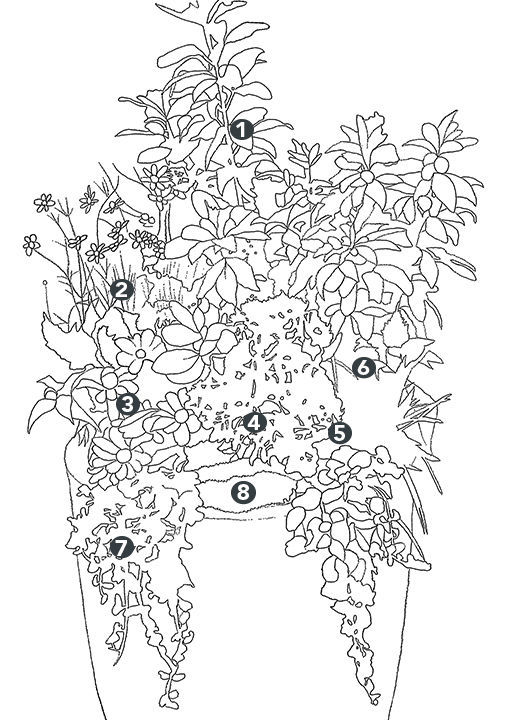
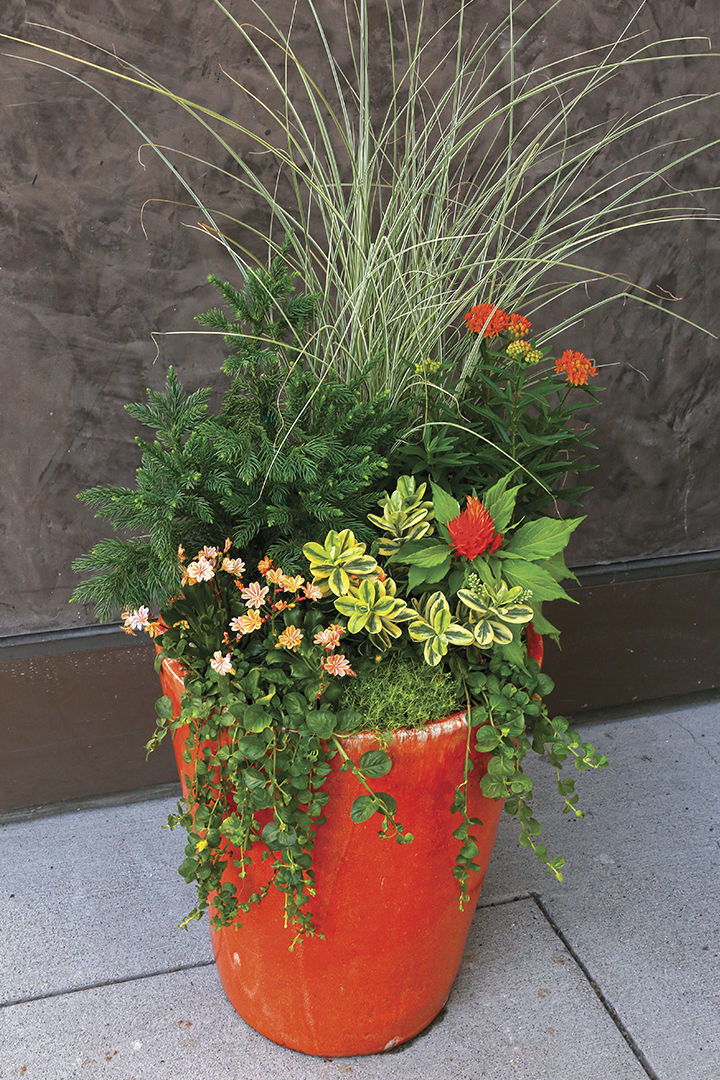
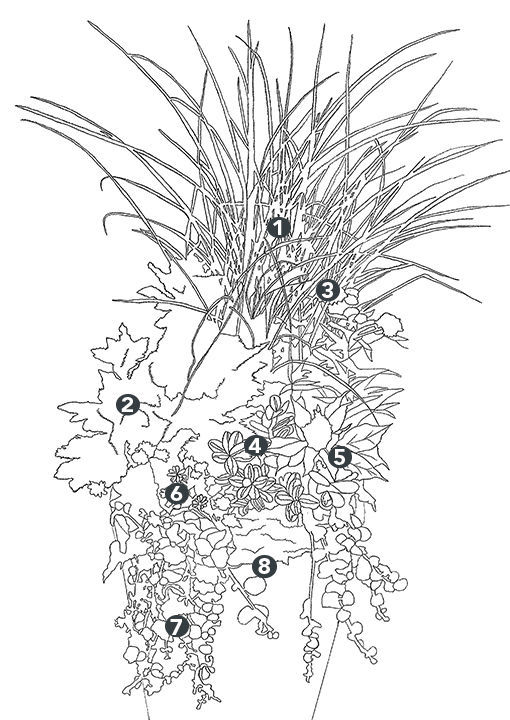
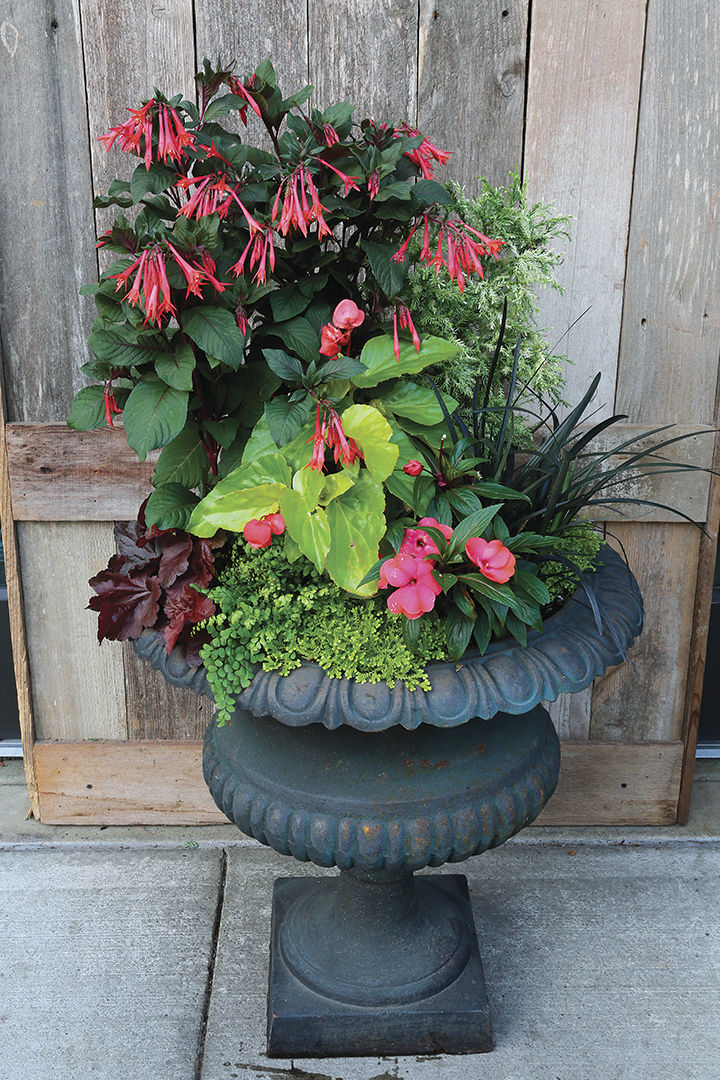
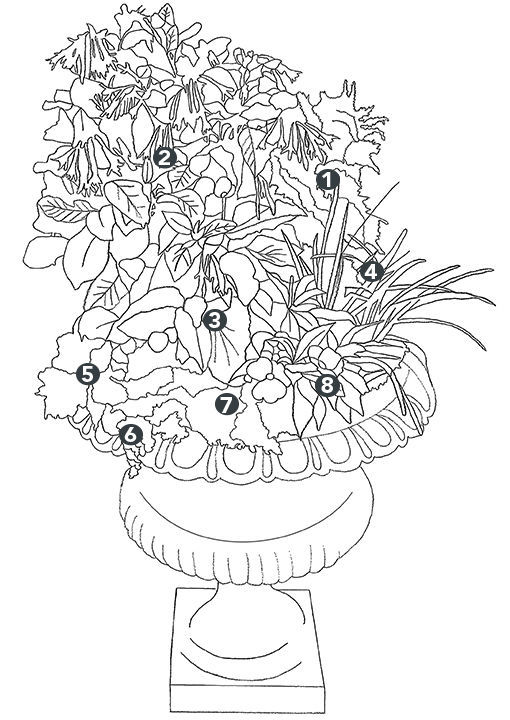




Comments
Log in or create an account to post a comment.
Sign up Log in